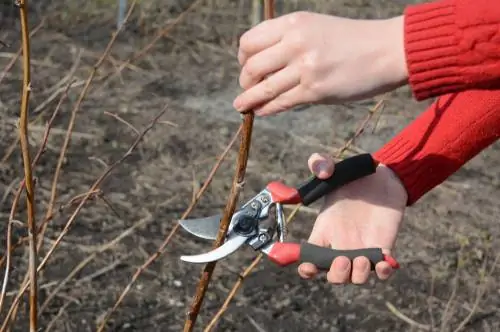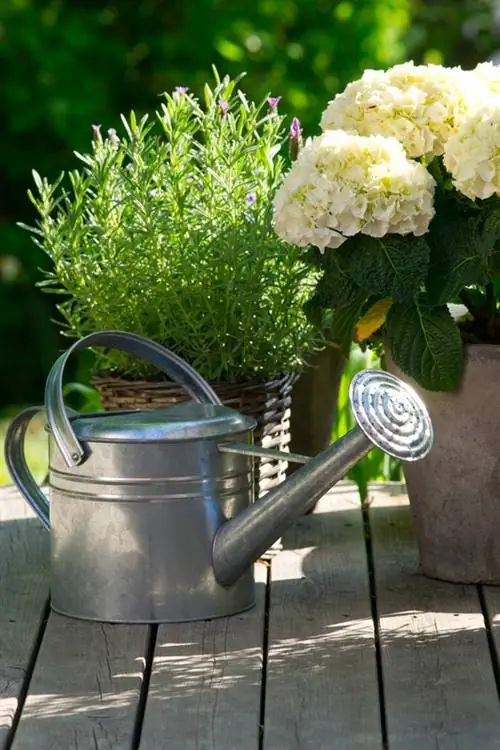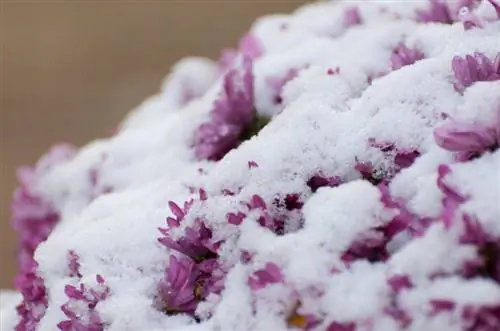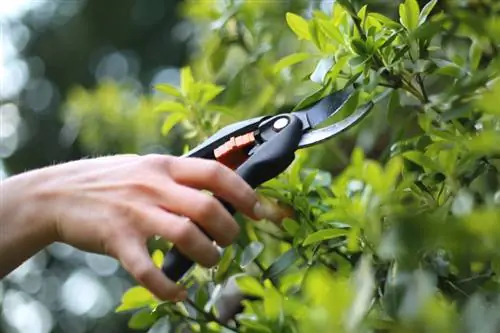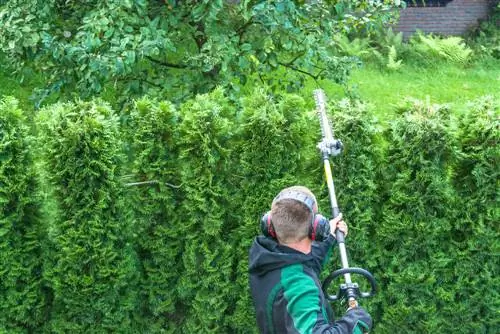- Author admin [email protected].
- Public 2023-12-16 16:46.
- Last modified 2025-01-23 11:19.
Rhubarb excels in the vegetable patch with its legendary location loy alty of up to 10 years. With good care, the hardy perennial increases in volume from year to year with juicy, premium quality stalks. This guide explains in a practical and comprehensible manner the contribution that cutting makes to the fruity, sour harvest yield.
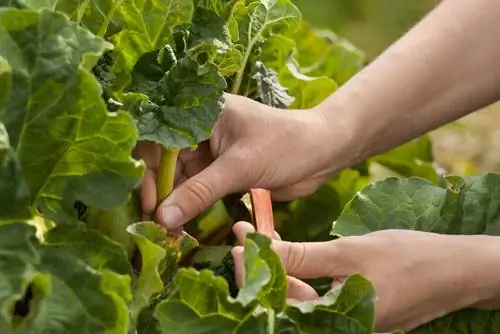
How should you cut rhubarb correctly?
Cutting rhubarb is not absolutely necessary, but can help with care. In autumn, after all parts of the plant have moved in, you can cut them off at ground level or twist them out. Flower buds should be removed to preserve the harvest quality.
Cut at your own discretion
The extent to which pruning of rhubarb is actually necessary is controversially discussed among hobby gardeners. Although the fruit vegetable thrives as a winter-hardy perennial, there are no convincing advantages associated with pruning to the ground level. It is therefore up to your horticultural judgment whether you cut a rhubarb plant or not. If you advocate a cut, please follow this strategy:
- Don't harvest from the end of June
- After the last harvest, fertilize with compost and let it grow
- Wait in autumn until all parts of the plant have withered and died
- Ideally twist out the leaves and stems at the base
- Alternatively, cut the rhubarb plant at ground level
In regions with harsh winters, it is advisable not to remove the dead shoots until late winter. Until then, the mighty leaves act as natural winter protection because they lie over the rootstock when they are retracted and mitigate severe frost.
First cut, then advance
Can't wait for the harvest season to begin? Then accelerate the ripening period by pushing your rhubarb plant forward. To do this, place a wicker basket or plastic bucket over the first tender shoots. In order for this gardening trick to work, dead plant parts from the previous year should first be cut off at ground level or twisted out.
Remove flowers without cutting
For the sake of a rich rhubarb harvest, you should not tolerate any flowering. The perennial invests all its strength in the growth of opulent flowers and countless seeds. This process takes place at the expense of juicy, sour fruit sticks, so that harvest quality and quantity are noticeably reduced. How to effectively prevent the unwanted process:
- Grip the inflorescence at the base of the stem with your fingers
- Rotate clockwise and pull at the same time
- Do not recut the break point
Deprived of its flowers, the rhubarb plant diverts its energy into growing new stems and leaves.
Unscrew ready-to-harvest stalks
The expert harvest of ripe rhubarb stalks avoids the use of cutting tools. Cutting off the juicy stems with a knife or scissors carries a high risk of rot, disease and pest infestation. Grasp the ripe stem at the base with your hand and twist it out clockwise.
The leaves are also spared from being cut. The leaves are separated from the petiole by simultaneously twisting and pulling. Due to a high concentration of harmful oxalic acid, the leaves of a rhubarb plant are not suitable for consumption.
Tip
Traditionally, the rhubarb harvest season ends on St. John's Day, at the end of June. Subsequently, the oxalic acid content in the sticks increases. Furthermore, the highly consuming fruit vegetable needs the remaining time until the end of the season to gather fresh strength for next year's rhubarb season.


